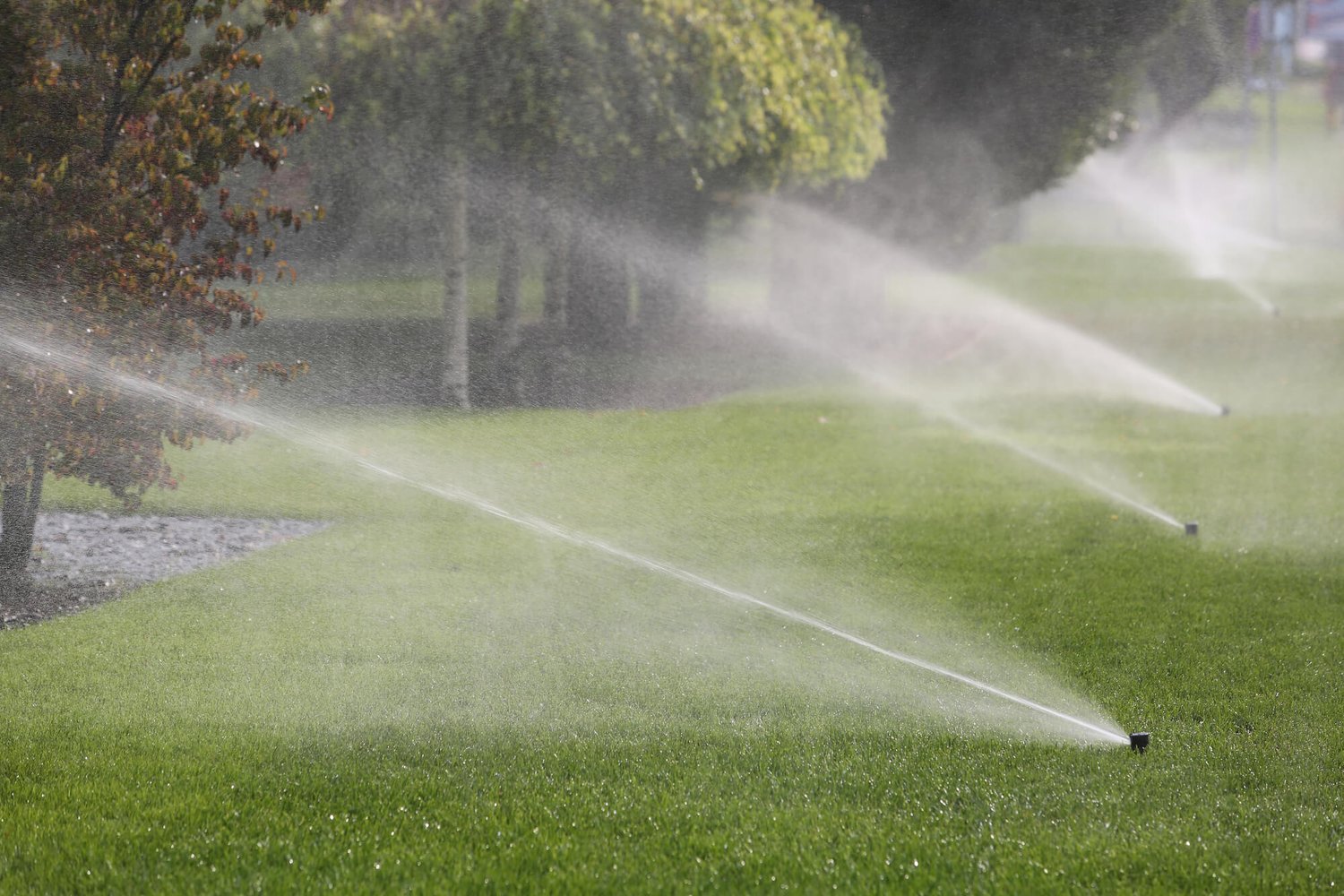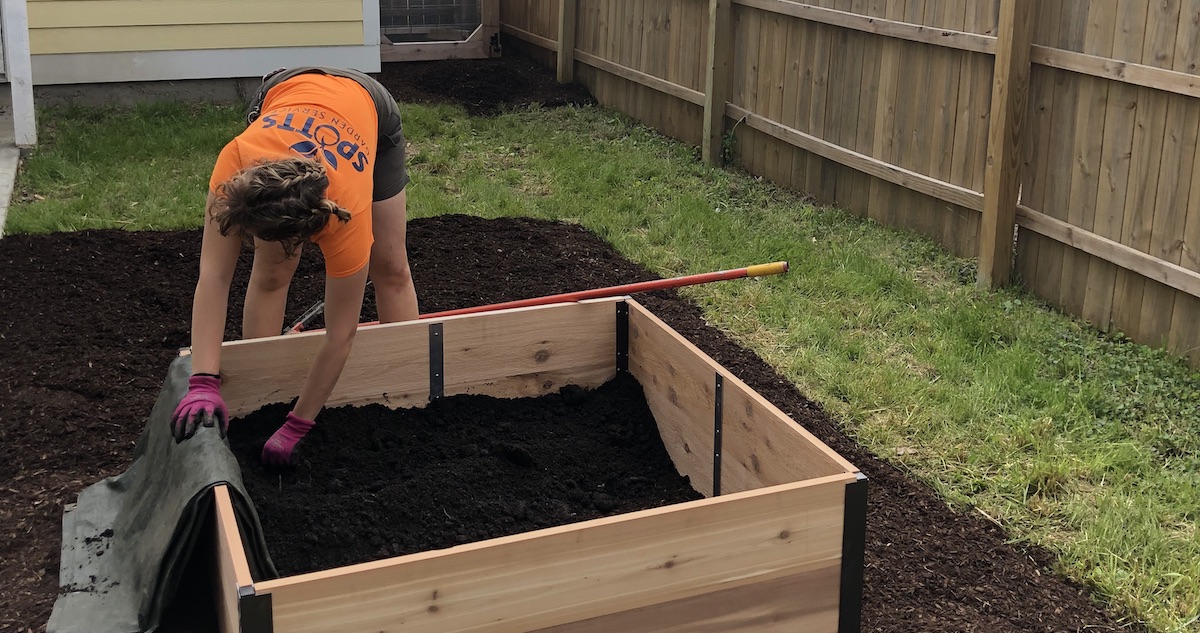Home>Gardening Basics>Tools and Equipment>How Many Irrigation Zones Do I Need


Tools and Equipment
How Many Irrigation Zones Do I Need
Modified: February 6, 2024
Find the right tools and equipment for your irrigation system. Learn how to determine the number of irrigation zones you need for efficient watering.
(Many of the links in this article redirect to a specific reviewed product. Your purchase of these products through affiliate links helps to generate commission for Chicagolandgardening.com, at no extra cost. Learn more)
Table of Contents
Introduction
Welcome to the world of irrigation! If you’re a homeowner or landscaper, you know the importance of maintaining a healthy and vibrant landscape. One crucial component of a successful landscape is an efficient irrigation system. But how many irrigation zones do you actually need?
Before we dive into that question, let’s first understand the basics. An irrigation zone is a specific area in your landscape that is watered by a single valve on your irrigation system. Each zone can have a different watering schedule, allowing you to tailor the amount and frequency of water to the specific needs of different areas in your landscape.
Now, you might be wondering why you need multiple zones instead of simply watering your entire landscape at once. Well, the answer lies in the varying water requirements of different plants, the slope of your yard, and other factors that affect water distribution. By dividing your landscape into zones, you can ensure that each area receives the appropriate amount of water without wasting resources.
In this article, we will explore the factors you need to consider when determining the number of irrigation zones you need, as well as the process of calculating and setting up those zones. We will also discuss the different types of irrigation systems available and how they can contribute to zone allocation.
Whether you’re planning a new irrigation system or upgrading an existing one, understanding the concept of irrigation zones is crucial for optimizing water usage and maintaining a healthy, thriving landscape. So, let’s get started with understanding the factors that come into play when determining the number of irrigation zones you need!
Factors to Consider
When deciding how many irrigation zones you need, several factors come into play. Understanding these factors will help you allocate zones effectively and ensure that each area of your landscape receives the appropriate amount of water. Here are some key factors to consider:
- Plant Types and Water Requirements: Different plants have varying water needs. Some plants require more frequent watering, while others are more drought-tolerant. By considering the water requirements of your plants, you can determine the number of zones needed to accommodate their individual needs.
- Sun Exposure and Shade: Areas of your landscape that receive more direct sunlight will likely require more water than shaded areas. By dividing your landscape into zones based on sun exposure, you can provide the optimal amount of water to each area.
- Soil Type and Drainage: Soils vary in their ability to hold and absorb water. Some soils drain quickly, while others retain moisture for longer periods. Understanding the soil type in different areas of your landscape will help you determine the number of zones needed to provide adequate watering without causing waterlogging or runoff.
- Slope and Elevation: If your landscape has slopes or elevation changes, water distribution can be challenging. Dividing your landscape into zones based on slope and elevation will help ensure that water reaches all areas evenly and efficiently.
- Landscaping Features and Obstacles: Consider any landscaping features or obstacles that may impact water distribution, such as trees, shrubs, walkways, or structures. These features may require separate zones to ensure proper coverage and avoid over or under-watering.
- Water Pressure and Flow: The water pressure and flow rate of your irrigation system can also influence the number of zones you need. If your system has limited pressure or low flow rate, dividing the landscape into more zones can ensure adequate water distribution.
- Budget and Resources: Finally, consider your budget and available resources when allocating zones. More zones may require additional valves, pipes, and sprinklers, which can increase the cost. Balancing your resources with the needs of your landscape is important in creating an efficient and cost-effective irrigation system.
By taking these factors into account, you can make informed decisions about the number of irrigation zones required for your landscape. Let’s now move on to the process of calculating and setting up those zones.
Calculating Irrigation Zones
Calculating the number of irrigation zones for your landscape requires careful planning and consideration. Here’s a step-by-step guide to help you calculate and set up your irrigation zones:
- Create a landscape map: Start by mapping out your landscape on paper or using a digital tool. Identify the different areas and features that need water and mark them on the map. This map will serve as a visual representation of your landscape and help you determine the allocation of zones.
- Divide based on water requirements: Consider the water requirements of the plants in each area. Divide your landscape into zones based on similar water needs. For example, areas with high-water requirement plants may need their own zone, while areas with drought-tolerant plants can be grouped together in another zone.
- Account for sun exposure and shade: Take into account the sun exposure and shade patterns in your landscape. Areas that receive more direct sunlight may need separate zones to provide adequate water, while shaded areas can be combined into a zone with lower watering frequency.
- Consider soil type and drainage: Evaluate the soil type and drainage characteristics of your landscape. Areas with different soil types or drainage capabilities may require separate zones to ensure proper watering. For example, sandy soil may need a separate zone from clay soil to prevent over or under-watering.
- Account for slope and elevation: If your landscape has slopes or elevation changes, divide the areas based on these factors. Slopes may require separate zones to avoid water runoff, while areas at higher elevations may need more water due to increased evaporation.
- Consider landscaping features: Take into consideration any landscaping features or obstacles that can impact water distribution. Areas with trees or large shrubs may require their own zone to accommodate their water needs, while areas with walkways or structures may need focused irrigation to avoid unnecessary water waste.
- Assess water pressure and flow rate: Evaluate the water pressure and flow rate of your irrigation system. If your system has limited pressure or low flow rate, consider dividing your landscape into smaller zones to ensure sufficient water distribution.
- Review and adjust: Once you have allocated zones based on the factors mentioned above, review your plan and make any necessary adjustments. Ensure that each zone is appropriately sized and receives the right amount of water for the plants and conditions in that area.
By following these steps and considering the specific needs of your landscape, you can calculate the ideal number of irrigation zones and set up your irrigation system accordingly. Now that we have discussed the calculation process, let’s explore the different types of irrigation systems that can aid in zone allocation.
Types of Irrigation Systems
There are various types of irrigation systems available, each with its own unique features and benefits. When determining the number of irrigation zones you need, it’s essential to consider the type of irrigation system you plan to install or already have in place. Here are a few common types of irrigation systems:
- Sprinkler Systems: Sprinkler systems are one of the most popular and versatile irrigation systems. They distribute water through a series of sprinkler heads that spray water over the desired area. With adjustable spray patterns and coverage, sprinkler systems allow for efficient water distribution and can be divided into multiple zones based on the layout and water requirements of your landscape.
- Drip Irrigation Systems: Drip irrigation systems deliver water directly to the roots of plants, minimizing water loss through evaporation and runoff. These systems use a network of tubes with drip emitters or micro-sprayers to provide a slow and steady supply of water. Drip irrigation systems are ideal for landscapes with water-sensitive plants or areas where water conservation is a priority, and they can be divided into zones based on specific plant needs.
- Soaker Hose Systems: Soaker hose systems work similarly to drip irrigation systems, but they use porous hoses that release water along their entire length. The hoses are laid in the designated areas, and water seeps out gradually to irrigate the surrounding soil. Soaker hose systems are particularly effective for garden beds or narrow areas and can be divided into zones based on planting arrangements and water requirements.
- Rotating Sprinkler Systems: Rotating sprinkler systems, also known as rotary or gear-driven sprinklers, are designed to distribute water in a circular or arc pattern. These sprinklers rotate as water is released, providing even coverage to a specific area. They are suitable for larger landscapes and can be divided into zones based on the radius of coverage and water requirements of different areas.
- Smart Irrigation Systems: Smart irrigation systems incorporate advanced technology and sensors to optimize water usage. These systems monitor weather conditions, soil moisture levels, and plant water requirements, adjusting the irrigation schedule accordingly. Smart irrigation systems can be divided into zones based on the specific needs of different areas, leveraging the technology to ensure efficient water distribution and conservation.
Each type of irrigation system offers its own advantages and may be more suitable for certain landscapes or watering preferences. By selecting the right irrigation system and dividing it into appropriate zones, you can maximize water efficiency and promote healthy growth throughout your landscape.
Now that you are familiar with the types of irrigation systems available, let’s move on to the final section and learn how to determine the number of zones needed for your irrigation system setup.
Determining the Number of Zones Needed
Now that you have considered the factors influencing zone allocation and are aware of the types of irrigation systems available, it’s time to determine the number of irrigation zones you need for your landscape. Here are some steps to help you in this process:
- Analyze your landscape: Take a close look at your landscape and consider the factors discussed earlier. Assess the types of plants, their water requirements, sun exposure, soil type, slope, and any other relevant factors that may influence water distribution.
- Divide based on plant needs: Group together plants with similar water requirements and allocate separate zones for high-water, moderate-water, and low-water requirement plants. This will allow you to tailor the watering schedule and quantity of water to the specific needs of different areas.
- Consider landscape features: Account for any landscape features, such as trees or shrubs, that may require their own separate zones. Additionally, factor in any obstacles like walkways or structures that may necessitate focused irrigation or the creation of unique zones.
- Assess water pressure and flow rate: Evaluate the water pressure and flow rate of your irrigation system. If you have limited pressure or low flow rate, it might be necessary to divide your landscape into multiple zones to ensure sufficient water coverage.
- Balance resources and budget: Consider your available resources and budget when determining the number of zones. Additional valves, pipes, and sprinklers may be required for each zone, so ensure that you can accommodate the cost and installation requirements.
- Consult with professionals: If you’re uncertain about determining the number of zones or need assistance with irrigation system design, don’t hesitate to consult with irrigation professionals. They can provide expert advice tailored to your specific landscape and ensure the optimal allocation of zones for efficient water distribution.
By following these steps and taking into account the unique characteristics of your landscape, you can confidently determine the number of irrigation zones needed. Remember, the goal is to ensure that each plant receives the appropriate amount of water while optimizing water usage and minimizing waste.
Now that you have a clear understanding of the factors influencing the number of irrigation zones and how to determine them, you are well-equipped to set up an efficient and effective irrigation system for your landscape.
Conclusion
Creating an effective irrigation system for your landscape requires careful consideration of various factors. By determining the number of irrigation zones needed, you can ensure that each area of your landscape receives the appropriate amount of water while promoting water efficiency and plant health.
Throughout this article, we’ve explored the factors you need to consider when determining the number of irrigation zones. Factors such as plant water requirements, sun exposure, soil type, slope, and water pressure all play a role in creating an efficient irrigation system that meets the specific needs of your landscape.
We’ve also discussed the importance of selecting the right irrigation system for your landscape. Sprinkler systems, drip irrigation systems, soaker hose systems, rotating sprinkler systems, and smart irrigation systems all offer different features and benefits for zone allocation and water distribution.
By following the steps outlined in this article, analyzing your landscape, dividing based on plant needs, considering landscape features, assessing water pressure, balancing resources, and consulting with professionals as needed, you can confidently determine the ideal number of irrigation zones for your landscape.
Remember, the goal of an irrigation system is to provide the right amount of water to each area of your landscape, promoting healthy growth and minimizing water waste. Efficient water management not only benefits your plants but also contributes to water conservation and cost-effectiveness in the long run.
So, take the time to evaluate your landscape, understand its unique characteristics, and plan your irrigation zones accordingly. With a well-designed and properly allocated irrigation system, you can maintain a beautiful and thriving landscape while being mindful of water usage.
Start planning your irrigation zones today, and enjoy the benefits of a lush and vibrant landscape for years to come!









